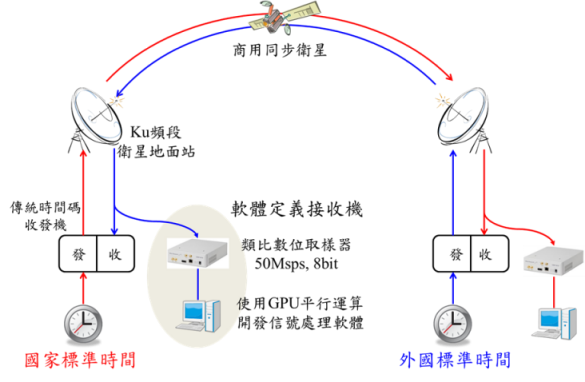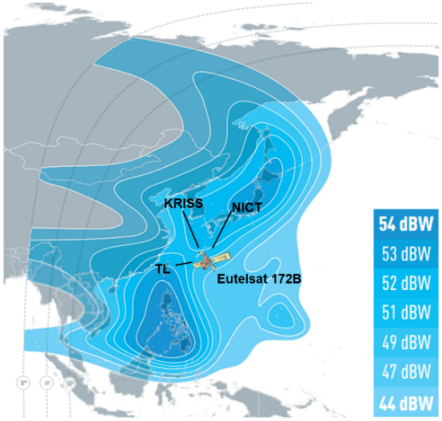Two-Way Time Transfe

Satellite Two-Way Time Transfer (TWTT) is one of the most precise time and frequency calibration techniques currently available. This method excels in its ability to cancel out various variable factors during the time transfer process, such as changes in satellite position and time delays caused by the ionosphere and troposphere. This results in exceptional accuracy, achieving uncertainties that can be better than 0.5 nanoseconds (ns). Historically, international time comparisons have relied heavily on the GPS common-view method. However, in recent years, the higher precision of satellite TWTT has led to its increasing adoption by national time and frequency standards laboratories for calibration tasks. The data obtained through this technique now constitute one of the primary sources for the International Bureau of Weights and Measures (BIPM) in computing International Atomic Time (TAI)
In satellite TWTT, time and frequency laboratories at different locations simultaneously send their standard signals through a synchronized satellite, which are then received and measured by each other. Assuming that the path delays experienced by the signals in both directions are symmetrical, these delays can be negated, allowing for the calculation of time deviations between the two sites, thus achieving time comparison objectives. An illustrative diagram of satellite TWTT shows two institutions equipped with satellite ground stations and time code transceivers. These stations drive the transceivers to generate spread-spectrum code signals, modulated with standard frequency carriers onto the Ku band and transmitted to commercial synchronous satellites. By exchanging signal arrival times and frequency offsets, the institutions can compare their standard times or frequencies.

Our laboratory currently operates four satellite ground stations, including one 1.8-meter and three 2.4-meter Ku-band stations. Due to the necessity of positioning antennas at high altitudes to avoid building obstructions, they are installed on rooftops, reinforced against strong winds. Regarding time transfer modulation, the laboratory is equipped with an NICT SRS (Satellite Ranging System) modem and an SDR (Software-defined Radio) modem, mainly utilized in the Asia-Pacific Two-Way Time Transfer Network. In 2021, we signed a cooperation research agreement (CRA) with South Korea's KRISS and Japan's NICT for tripartite international time comparison experiments. Committed to staying abreast of developments in time transfer technology and expanding international collaboration, our laboratory actively participates in satellite TWTT cooperative projects. Future plans include conducting calibration for our satellite ground stations and collaborating with European and American partners in TWTT comparison experiments.
